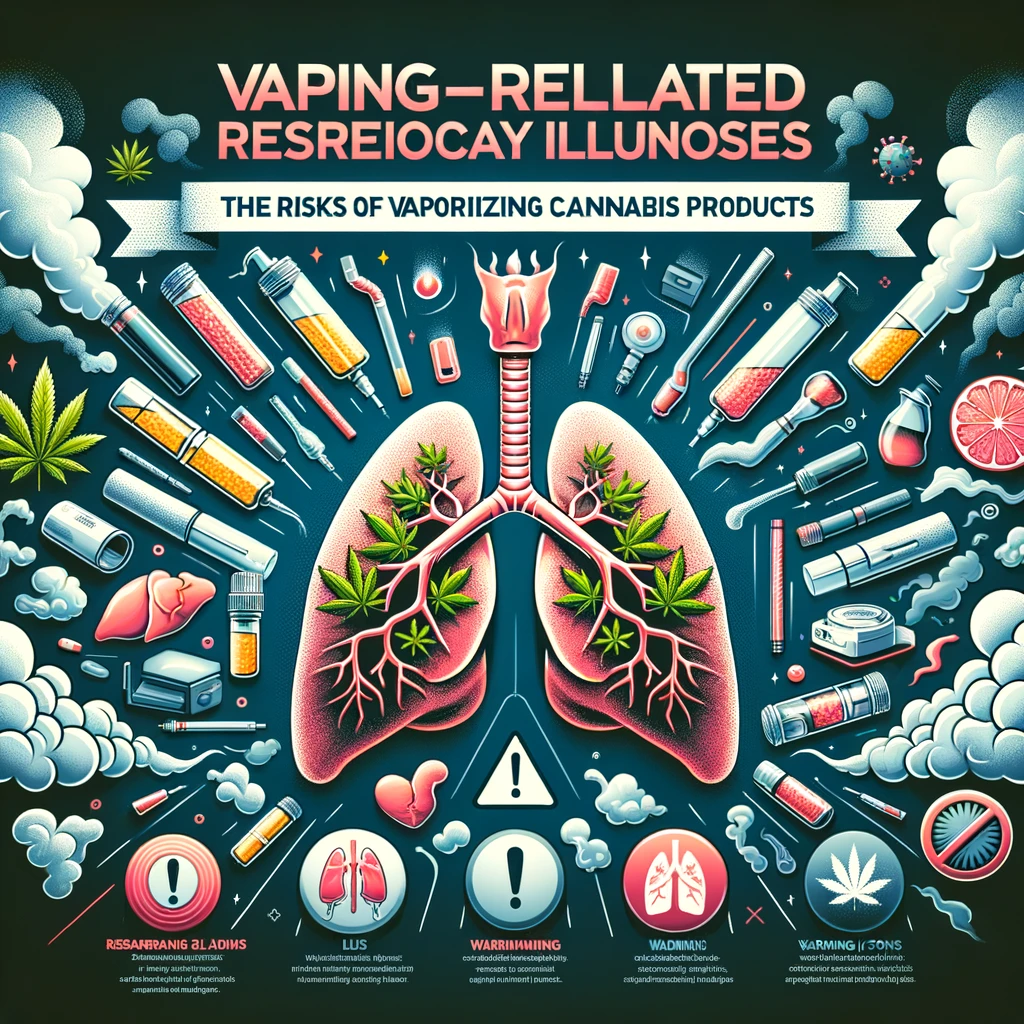
The term “vaping” refers to the act of inhaling vapor produced by electronic cigarettes or vaporizers. Initially introduced as a safer alternative to traditional smoking, vaping has gained immense popularity, particularly among younger demographics. However, the safety of vaping, especially concerning cannabis products, has come under scrutiny due to increasing reports of respiratory illnesses linked to this practice.

Vaping involves the heating of a liquid or substance until it becomes a vapor, which is then inhaled by the user. This liquid, often called e-liquid or vape juice in the context of nicotine products, can contain various substances, including flavors, nicotine, and solvents. In the case of cannabis products, the substances vaporized are typically concentrated forms of marijuana, containing cannabinoids like THC (tetrahydrocannabinol) and CBD (cannabidiol).

One of the primary concerns with vaping cannabis products is the potential presence of harmful substances in the vapor. Unlike traditional smoking, where the combustion of plant material releases a well-known array of harmful chemicals, the vaporization process does not involve combustion. However, it does involve the heating of substances to temperatures that can lead to the decomposition of other compounds within the e-liquid or cannabis product. These byproducts can be potentially harmful when inhaled.
“Vapor residue” refers to the residual substances left behind after the vaporization process. This residue can be deposited in the respiratory tract or even on the vaping device itself. In the lungs, such residues can contribute to respiratory issues, particularly if they contain toxic chemicals. Some studies suggest that the flavoring agents and solvents used in vape juices can decompose into carcinogenic compounds when heated to the temperatures used in vaping devices.
The direct link between vaping cannabis products and respiratory illness is an area of active research. Several cases of lung injury, commonly referred to as VAPI (Vaping Associated Pulmonary Injury) or EVALI (E-cigarette or Vaping product use-Associated Lung Injury), have been documented. These conditions manifest as severe respiratory symptoms ranging from difficulty breathing and chest pain to severe lung damage requiring medical intervention. The exact cause of these injuries is still being investigated, but early research points to certain additives in cannabis vape products, like vitamin E acetate, which has been found in many samples taken from patients suffering from these conditions.
Vitamin E acetate is used as a thickening agent in some THC vaping products. It is considered safe for topical application and dietary use, but its inhalation has been shown to interfere with normal lung functioning. The oil-like properties of vitamin E acetate could be particularly hazardous when vaporized, leading to a condition known as lipoid pneumonia, where fatty substances enter the lungs, disrupting normal respiratory function.
Aside from chemical concerns, the physical effects of inhaling heated vapor can also contribute to respiratory issues. The heat and irritation from the vapor itself can damage the delicate tissues of the airways and lungs, leading to inflammation and other respiratory symptoms.
Furthermore, the practice of vaping itself can impact respiratory health regardless of the substance being vaporized. The act of deep inhalation and holding the vapor in the lungs can put additional stress on the respiratory system. This can exacerbate pre-existing conditions such as asthma or lead to the development of new respiratory issues.
To mitigate these risks, some users of cannabis products may opt for alternative methods of consumption, such as edibles or topical applications, which do not involve inhalation. Regulatory agencies and health professionals continue to study and monitor the effects of vaping and are working to develop guidelines and regulations to ensure the safety of these products.
In conclusion, while vaping cannabis products might present fewer carcinogenic risks compared to traditional smoking, it is not without its own set of risks, particularly concerning respiratory health. The long-term effects of vaping are still being studied, and users should be aware of the potential risks associated with this method of consumption. As the cannabis industry grows and evolves, ongoing research and regulation will be critical in ensuring that all forms of cannabis consumption are as safe as possible.
Detailed diagram of a pen-like vaporizer used for vaping. It shows the internal and external components of the device.
Diagram of a vaporizer used for vaping. It illustrates the internal and external components of the device.
Graphic depicting the risks of vaporizing cannabis products in relation to respiratory illnesses. You can view and download it above.